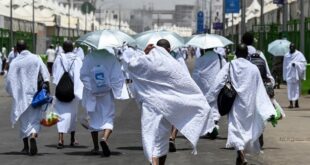The Sino-Indian Geo-political Trap
Sri Lanka’s political foolhardiness in its inability to solve peacefully its domestic ethnic minority issue over the last fifty or so years, as an independent sovereign nation state has, as a consequence of a bitterly fought civil war, pulled her into the vortex of a new geo-political game played amongst India, the United States and China in which the island nation’s sovereignty is in danger of being compromised.
Sri Lanka’s dependence on India for domestic security has been perennial. For instance, Sinhalese kings like Kasyappah in ancient times had sought Indian help to defeat a domestic enemy, and in the modern period the former Prime Minister Srimavo Bandaranaike rushed for Indian help to put down a coup against her government in 1962. Even during the December 2004 Tsunami it was India’s navy that first came to Sri Lanka’s aid.
However, India’s interest in the Sri Lankan ethnic issue has to be understood in light of her larger interest as an emerging regional power. The Indian Government’s Timpu initiative in 1985 was its first open attempt to assert its power over Sri Lanka’s domestic problem. Of course it ended in failure and the ethnic war escalated subsequently. Yet, India continued to flex its muscles. When the Indian government air-dropped 22 tons of relief supplies on the Jaffna Peninsula in June 1987 as a protest against the Sri Lankan army’s May offensive, ‘Operation Liberation’, against the LTTE, the then President J. R. Jayawardena described that act as India’s “seventeenth invasion of Sri Lanka” during the island’s 2500 years history. Following this incident, the India-dictated Indo-Sri Lankan Accord signed on 29 July, the violence that ensued in the Sinhalese areas, and the landing of 7,000 soldiers of the Indian Peace Keeping Force (IPKF) a day after signing that accord, all went to prove to the Sri Lankan government that the Indian factor in Sri Lankan ethnic politics was going to play a determining and perhaps a permanent role in the island’s future development.
Thus, while Jayawardena was gleefully watching the confrontation between the IPKF and the LTTE with a false sense of hope that the might of the IPKF would wipe out the LTTE, New Delhi was more interested in winning the “Great Game” in the Indian Ocean region and was moving its pawns accordingly rather than to defeat the LTTE. Although the IPKF had the capacity to capture the LTTE leadership it did not have the determination to do so because New Delhi wished for a different outcome. To convert the island-nation a satellite state under India’s zone of control in the long run is the ultimate objective in this game. As Lord Palmerston said, in politics there are no friends or enemies but only interest.
Even though the IPKF was sent back by the Premadasa Government in Colombo in March 1990 under great humiliation, and even though the Indian Prime Minister Rajiv Ghandi was assassinated by a LTTE suicide bomber in May 1991, Indian role in Sri Lankan affairs did not diminish or disappear but remained rather ambivalent until the new millennium. Its alternating on-again-off-again support to the Tamil struggle and to the Sri Lankan government respectively was, in view of the Great Game, a calculated ploy to enhance India’s own self-interest in the geo-political arena. On the one hand by raising concerns in international forums about Sri Lankan government’s human rights violations and injustice to the Tamil community New Delhi was trying to appease the Tamil Nadu lobby, while on the other it could not completely alienate the government in Colombo because of the danger it will cause to India’s strategic interest in the Indian Ocean.
With the dawn of the new millennium and particularly towards the last quarter of its first decade there had been a radical shift in this strategy. As Robert Kaplan writes in Foreign Affairs andin the context of China, “(a)s states become stronger, they cultivate new needs and … apprehensions that force them to expand in various forms.” Accordingly, India, the second most populous and the seventh largest country in the world, has emerged in the new millennium as an economic power house competing closely with her nearest rival, China, the most populous and the third largest nation. These two giants are now facing each other to gain control over the Indian Ocean. It is this rivalry that is setting the agenda for India’s relations with Sri Lanka. Kaplan expects, quite realistically, that “China and India will play a “great game” … in … Sri Lanka.”
The intensity of this game gained momentum after 2005 when the populist Mahinda Rajapakse, thanks to another strategic blunder made by the LTTE-supremo Prabakaran who forced the Tamils to boycott the presidential elections, won the contest by defeating his rival Ranil Wickramasinghe by a narrow margin, and at once resolved to defeat the LTTE militarily. To make this possible, the Rajapakse government entered the global arms bazaar to procure weapons, and the Eurasian alliance involving Beijing, Tehran and Moscow came to its aid. Of the three, it was China, by signing a deal with Sri Lanka in 2007 to build a massive naval base at Hambantota in return for military assistance to the government out manoeuvred India and made its physical presence in the island with a strategic foothold in the Indian Ocean. China’s aid to Sri Lanka is reported to have amounted to almost one billion US dollars in 2008.
In spite of this deal with China, from the point of view of Sri Lanka however, India’s friendship and support is crucial to win the Civil War. The presence of nearly sixty million Tamils in Tamil Nadu, and, the concentration of Indian-Tamil plantation labourers in the central highlands of Sri Lanka, most of whom are now Sri Lankan citizens, are two strategic pawns that Delhi could move at will to checkmate Colombo in the ethnic chess game. Thus the weaponry and financial support from the Eurasian alliance had to be balanced with at least logistical support and diplomatic sympathy from India. It was this balancing act that compelled President Rajapakse and his cabinet caucus to shuttle between New Delhi and Colombo since 2005. Winning the favour of India also meant winning the support of the United States, because that those two are in a regional partnership to prevent the Chinese naval expansion in the Indian Ocean.
The final victory over the LTTE in 2009 was ultimately decided by the covert but strategic support rendered by India. In a strange irony even Karunanithi, the Chief Minister of Tamil Nadu was rather muted in his criticism of Rajapakse Government during the final days of the war when the Tamil Tigers were facing utter decimation at the hands of the Sri Lankan military and when the people of his own state were demanding military intervention from the Indian Government. That shows the success of New Delhi’s domestic diplomacy.
The government’s victory over the LTTE is pyrrhic not only in terms of the huge death and destruction but also, even more seriously, in terms of the country’s sovereignty. It is now commonly accepted that the economic and political forces of globalization have liquidized the solid structure of national political sovereignty that was born out of the Westphalian synthesis. But in the context of strategically situated small nations like Sri Lanka, more than economic globalization it is the regional and super power politics that presents a greater threat to national sovereignty. This is bound to create xenophobia.
What price did Sri Lanka pay for the Chinese and Indian support? The economic contracts won by the two giants to reconstruct and develop the island’s infrastructure are only one side of the story. The more critical one however, is the fact that Sri Lanka is now well and truly embedded into the post-September 11 geo-politics in the Indian Ocean. It is not the Cold War that is directing this political game but the rise of China as a countervailing super power to the United States. If the naval base in Hambantota satisfies China’s need to protect its energy-supplying sea routes the control over the Trincomalee harbour becomes absolutely essential for the United States to checkmate China’s expanding naval power. The US wishes to accomplish this through India and that explains the close alliance between India and the US. In the worst scenario, if the fight for dominance over the Indian Ocean between China and the US-India intensifies and culminates in open confrontation Sri Lanka will certainly become an important theatre of action. Even otherwise Sri Lanka is in a sad predicament of having to serve two rivalling masters, India and China.
Sino-Indianization of the Economy
China has been awarded contracts to build a Special Economic Zone, a 1000 acre Tapioca farm, Hambantota port, 900 MW coal fired Nurachcholai power plant, Colombo-Katunayake Expressway, Pallai-Kankesanturai rail-line, Jaffna housing complex for the army and many others. India on the other is about to add details to a Free Trade Agreement with Sri Lanka that was agreed in principle about 10 years ago. However, details of the latest Comprehensive Economic Partnership Agreement (CEPA) which is supposed to spell out the specifics have not been published yet. Surely, the devil must be in the details. According to The Hindu, “India and Sri Lanka are poised to sign seven or eight agreements and discuss a credit line of $382 million, which come on top of an earlier commitment of $416 million for rehabilitation of the railway infrastructure in the war-hit areas. One of the agreements will cover cooperation in railways and another in the security arena. The two sides will also seek to cap four years of negotiations by announcing a pact to construct a coal-fired power plant at Trincomalee in eastern Sri Lanka.”
It is natural that in agreements like these there will be gains and losses for both parties. However, there are other disturbing elements that arise from these deals. In the case of the economic projects undertaken by China the presence of more than 20,000 imported convict Chinese labour in Sri Lanka has wider ramifications. Will this labour return to China after completing the projects or will that remain here as the latest wave of indentured labour, as happened in the 19th century under the British? Will the island see the growth of a China Town either in the north or south of the country, as happened elsewhere in the world?
Similarly, with the opening of trade, communication, investment and security links with India the spectre of a possible Indianization of the commanding heights of the Sri Lankan economy cannot be totally discounted. Where is the comparative advantage for Sri Lanka to compete with Indian mega-investors and global manufacturers? Be that as it may, there is another development that is happening at the local scene. The young descendants of the Indian plantation labour are increasingly moving away from the tea estates like their counterparts in Malaysia and are entering the commercial sector. Indian-owned and Indian –financed textile and other retail establishments are on the rise in Colombo and other major towns. Since these young men and women are Sri Lankan citizens it is their democratic right to establish businesses like any other Sri Lankan. However, past history tells us that the Indian retail establishments have a hidden advantage over their local Sinhalese or Muslim competitors when dealing with businessmen and traders on the opposite coast.
The Spectre of 1915
This was exactly what happened in the nineteenth century which ultimately led to the 1915 racial riots. In that instance the Indian Moor businessmen unfortunately became the target of mob attack even though the real issue was alien domination of the national economy and politics. The Indian Moors’ shops were the most visible symbol of that alien element at that time and therefore bore the brunt of Sinhalese xenophobic anger. There is a danger that such anti-Indian feeling may grow and explode again especially when the local petty bourgeoisie begin to experience the effects of unfair economic competition. For the time being what is keeping the vast majority of the Sri Lankan population economically afloat are the remittances from the Middle East. That avenue is not going to remain open for ever. With dwindling economic opportunities and increasing urban poverty civilian unrest can become nastier. An already politicized Sangha cannot be expected to sit on the sideline when that explosion happens.
Given this multi-dimensional post-war quagmire the most urgent task for the government is to settle the minority issue and win the confidence and support of the Tamils and Muslims. Resolving to hold elections in the north and east and devolve power without substance to Provincial Councils are not going to solve the core issues of rehabilitating the war victims, creating employment opportunities, providing educational and health facilities and securing land rights to the minorities. There is a distinct cultural character to the north and east of Sri Lanka and that character must be protected at any cost to enhance the cultural heterogeneity of the nation. It is also a potential revenue earner in the wake of a rising tourist sector. Unless these issues are addressed immediately and with utmost seriousness the rump of the LTTE which is now trying to get a transnational foothold may try its luck for a second time.
The current Gaullist presidential constitution has turned the government into an authoritarian regime. Such regimes are not uncommon in Asia. Almost all the East Asian economies such as South Korea, Taiwan, Japan, China and even Singapore achieved their NIE status under authoritarian regimes. People will sacrifice their liberties and democratic rights for sometime and tolerate these regimes as long as they physically witness the economic benefits accruing to them in the form of food on the table, roof over their heads, hospitals for the sick, schools for the children, and employment for the able bodied. Once the regimes fail to deliver these benefits civilian disenchantment and even unrest sets in. In Sri Lanka, it appears that it is not the government but the presidency itself that is becoming increasingly authoritarian by aggrandizing most of the legislative and executive powers. That means the buck stops with the president. The President’s heroism against the LTTE may have won him the fame of the historical Dutugemunu, but will the sharing with foreign powers the commanding heights of the economy and the nation’s sovereignty in the name of development and security earn him the notoriety of an equally historical Ellepola?
Post Disclaimer | Support Us
Support Us
The sailanmuslim.com web site entirely supported by individual donors and well wishers. If you regularly visit this site and wish to show your appreciation, or if you wish to see further development of sailanmuslim.com, please donate us
 Donate
Donate
IMPORTANT : All content hosted on sailanmuslim.com is solely for non-commercial purposes and with the permission of original copyright holders. Any other use of the hosted content, such as for financial gain, requires express approval from the copyright owners.
 Sri lanka Muslims Web Portal Sri Lanka Muslims News Center
Sri lanka Muslims Web Portal Sri Lanka Muslims News Center
 Donate
Donate


